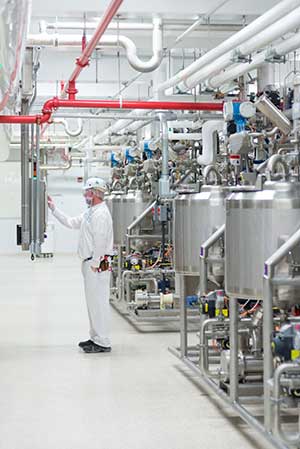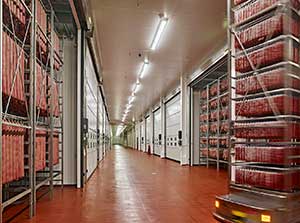Is more automation a solution for pandemic woes?
The pandemic is speeding up discussions about increasing automation, design-build experts say.
Interest in automating has been high for years, first for its ROI and more recently because of difficulty finding enough employees. “This will add to the reasons that processors will look to add automation,” says Darrin McCormies, senior vice president and director of industrial services for Epstein design and construction.

Jeff Matis, senior project director at CRB, points out that processors typically automate in phases as budget allows, “capturing low-hanging fruit” before making more expensive investments. "The issue with COVID now just makes people more focused in looking at another level of automation, whereas perhaps in the past, it was marginal in its payback."
For processors that decide to stay centralized, A M King expects more automation adoption as equipment becomes more sophisticated, especially in handling irregular food shapes and consistencies, says John Koury, who provides architectural services for the firm. Operations that take a more dispersed and localized direction likely will feel less pressure to automate, he says.
As always, plants are trying to balance automating tasks to reap a variety of savings and benefits, including removing human pathogen carriers with maintaining a nimble workforce that can react quickly to demand fluctuations or supply chain trouble.
Here are the factors that processors are weighing, according to David Ziskind, director of engineering, for Black & Veatch, NextGen Ag: Automation that reduces personnel has the added benefit of removing potential carriers from the process, creating physical distancing and possibly allowing a facility to continue to operate when an area experiences an outbreak. However, automation generally reduces flexibility, which we saw in recent months when some manufacturers struggled to turn on a dime from food service and institutional packaging to retail. Plus, in certain parts of the world, a very low labor rate could be a barrier to adopting automation solutions.
“For example, a manufacturer focused on food service or institutional packaging may not want to give up automation in order to have the flexibility to switch to retail on a dime in the future, but they might consider break points where they could bulk off product (for example, into totes) and send to a copacker for retail packaging, or even purchase some inexpensive portable packaging equipment that could be quickly pressed into temporary service,” says Chris Vigil, Black & Veatch NextGen Ag project manager.

Even though the pandemic is adding priority to some automation projects, companies must prepare for the change, and funding, resource availability and timeframe must align, says Michael Petrusma, vice president of EV Group construction and safety management.
Automating processes solves several short-term issues but may create new issues in their place, he notes. “A well-thought-out plan and execution is the only way a facility will see the full benefit of automation.”
He shares an example of how vital employee training and skilled staff are: A pet food facility that installed a new automated line last year experienced a human error during the pandemic that shut down the line. The line remained down several weeks because the OEM couldn’t visit due to travel restrictions. Lack of on-site knowledge and parts delivery delay were problematic. “If the facility had the right training and resources on site, weeks of lost productivity could have been days,” Petrusma says.







